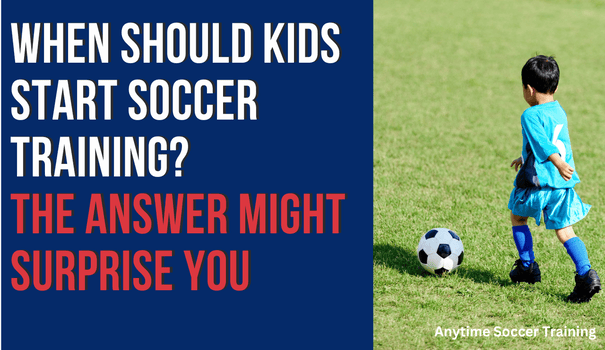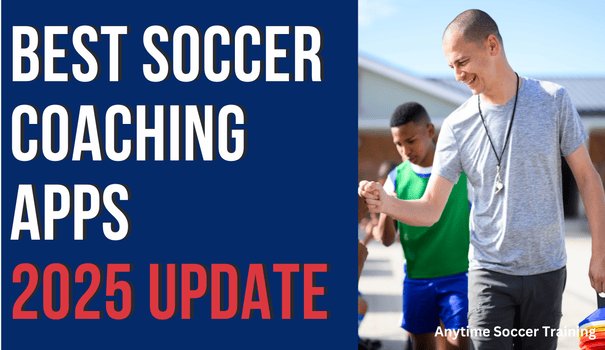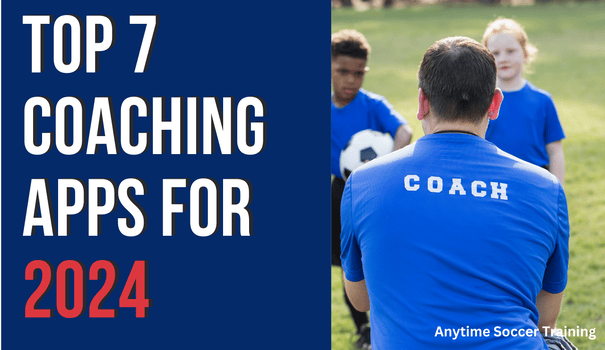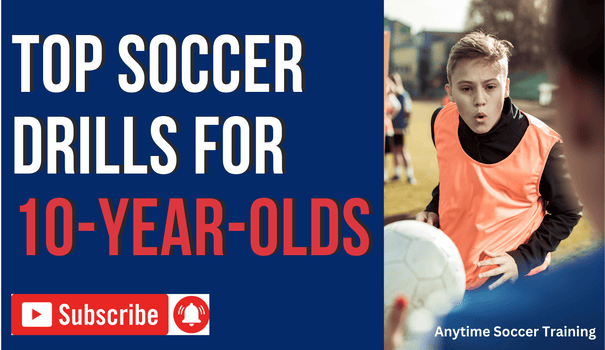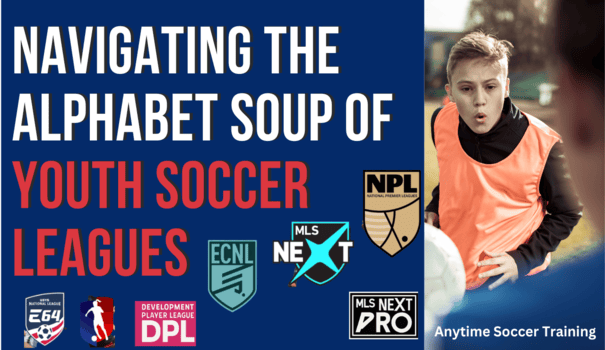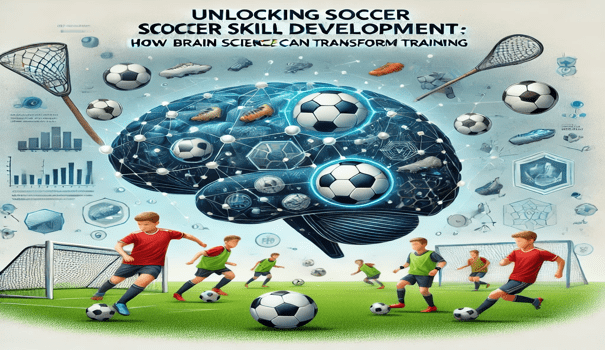
The human brain is an extraordinary organ, capable of immense growth and adaptability.
However, many involved in youth soccer—including coaches and trainers—overlook or fail to integrate what we know about how the brain learns into their practices.
Even when they understand brain science, their methods often don’t reflect this understanding, leading to training sessions that unintentionally hinder skill development.
This disconnect between brain science and training practices can result in well-meaning advice that stalls progress instead of fostering it.
In this blog post, we’ll dive into how the brain learns, why this understanding is crucial for soccer development, and actionable strategies to align training with proven neuroscience principles.
We’ll also tackle common misconceptions and offer practical examples to bridge the gap between science and practice.
How the Brain Learns: The Science
Neuroplasticity: The Brain’s Ability to Adapt
Neuroplasticity: The Brain’s Ability to Adapt
Neuroplasticity is the brain’s remarkable ability to form and strengthen neural connections in response to practice and experience.
Repetition Builds Connections: The more a player practices a skill, the stronger and faster the neural pathways become, leading to automatic execution.
Youth Advantage: Children’s brains are especially adaptable, making early and consistent technical training a powerful tool in their development.
Myelination: Creating Efficiency Through Practice
Myelin, the substance that wraps around nerve fibers, acts like insulation on electrical wires, boosting the speed and accuracy of neural signals.
Consistent Practice: Regular, focused practice increases myelination, making skills sharper and more reliable.
Deliberate Focus: Mindless repetition won’t cut it—intentional, goal-oriented training is what solidifies skills.
Chunking: Breaking Skills Into Manageable Parts
The brain processes complex tasks more efficiently when they’re broken into smaller, simpler components.
Skill Isolation: Drills that isolate specific skills, such as passing or dribbling, allow players to master each component before combining them.
Avoid Overload: Trying to teach too many skills at once can overwhelm the brain, leading to frustration and slower progress.
Common Misconceptions About Learning and Training
“You’re starting too early.”
“You’re starting too early.”
Some believe that really young kids don’t need technical training yet.
However, neuroscience shows early exposure to repetitive, skill-focused exercises helps build the foundational neural connections needed for long-term success.
For instance, a 5-year-old practicing ball mastery drills can develop muscle memory and coordination that older kids struggle to catch up on.
“When possible, drills should always be game-like.
Game-like drills are important, but they shouldn’t replace unopposed technical training.
Neuroscience supports isolating specific skills first, allowing the brain to focus without distractions.
Once players gain confidence in these skills, they can apply them effectively in-game scenarios.
“Unopposed technical training doesn’t work.”
This myth ignores how the brain learns. Unopposed drills provide the repetition necessary to create automaticity.
Without these foundational reps, players can’t perform consistently under pressure.
Fancy moves don’t translate into games.”
Moves like multiple scissors or juggling are often dismissed as impractical, but practicing them enhances creativity and adaptability.
These skills train the brain to think quickly and solve problems, both of which are critical in game situations.
Practical Strategies for Brain-Aligned Soccer Training
***
Incorporate Unopposed Technical Training in Every Session
Unopposed drills are critical for mastering fundamentals. For example, start each session with 10-15 minutes of isolated exercises, like cone dribbling or one-touch passing.
These drills build muscle memory, making execution smoother during high-pressure situations.
Assign Homework Using Apps or other Tools
Skill acquisition requires consistent practice beyond team training.
Apps like Anytime Soccer Training provide guided, age-appropriate drills that players can do at home, ensuring they get the repetition needed to strengthen neural pathways.
Assign weekly “homework” to keep players engaged and progressing.
Introduce Small Group Breakout Sessions
Break players into small groups during practice for personalized attention.
For instance, while most players work on team drills, a small group can focus on perfecting their first touch or shooting technique. This approach ensures each player’s unique needs are addressed.
Dedicate a Staff Member to Technical Training
Assigning a coach to oversee unopposed technical training across all teams ensures that this crucial component is prioritized consistently.
This staff member can also mentor other coaches, ensuring a club-wide commitment to technical development.
Rethink Team Structures for Training
Kids don’t always need to train within strict age-based teams. Some players may require more repetitions or additional time to master a skill, regardless of age.
Create mixed-age pods for technical drills to allow players to progress at their own pace.
Build Continuity Across Age Groups and Skill Levels
As players progress through age groups, ensure that the technical training they receive builds on the foundation laid in previous years.
This creates continuity and reinforces previously learned skills, ensuring that players continue to improve without having to “unlearn” bad habits.
Encourage consistency in training methods so that players at every level are developing the same core skills, regardless of their age or team.
Blend Isolation with Application
Combine unopposed drills with game-like scenarios to bridge the gap between practice and competition.
For example, after working on passing accuracy in isolation, transition to a small-sided game where players apply those passes under defensive pressure.
Track Progress and Celebrate Growth
Motivate players by tracking their technical improvements, such as increased dribbling speed or more consistent shot accuracy.
Share their progress with them to reinforce their hard work and dedication.
Practical Example: Combining Brain Science with Practice
Let’s say you’re running a 90-minute training session. Here’s how to align it with brain science:
Warm-Up (15 minutes):** Begin with unopposed technical drills, like figure-eight dribbling or wall passing, focusing on precision and repetition.
Breakout Groups (20 minutes):** Split players into small groups to refine individual skills, like shooting or first touch, with personalized coaching.
Game-Like Drills (30 minutes):** Transition to small-sided games or scenarios where players apply the skills they just practiced.
Cool-Down (10 minutes):** Conclude with feedback, a fun finishing drill, and remind players of the homework expectations that should be completed during the week to reinforce what was learned.
Conclusion
Of course, many coaches already incorporate repetition, isolated skills, and game-like drills in their sessions, but what’s often missing is a consistent and dedicated alignment to brain science.
While these strategies are being used, they’re not always systematically integrated or reinforced in a way that reflects how the brain truly learns.
By fully aligning training with brain science, we can make sure that every training session is optimized for the best possible results.
Programs like Anytime Soccer Training, small group sessions, and staff roles dedicated to technical training can help bridge the gap between science and practice. Most importantly, let’s rethink rigid team structures to meet players where they are, allowing every child to develop at their own pace.
The brain is as integral to soccer as the feet—let’s train like we know it.

